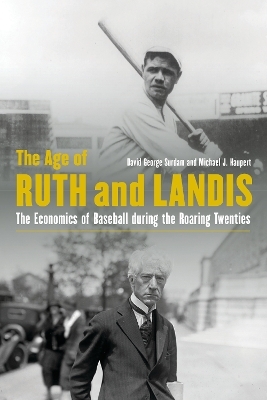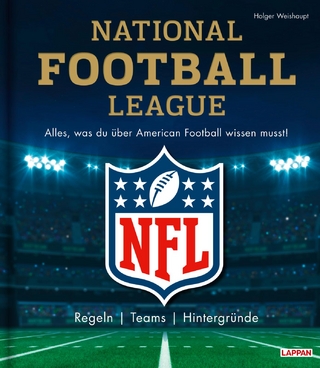
The Age of Ruth and Landis
University of Nebraska Press (Verlag)
978-0-8032-9682-4 (ISBN)
- Lieferbar (Termin unbekannt)
- Versandkostenfrei innerhalb Deutschlands
- Auch auf Rechnung
- Verfügbarkeit in der Filiale vor Ort prüfen
- Artikel merken
As the 1919 World Series scandal simmered throughout the 1920 season, tight pennant races drove attendance to new peaks and presaged a decade of general prosperity for baseball. Babe Ruth shattered his own home-run record and, buoyed by a booming economy, professional sports enjoyed what sportswriters termed a “Golden Age of Sports.”
Throughout the tumultuous 1920s, Major League Baseball remained a mixture of competition and cooperation. Teams could improve by player trades, buying Minor League stars, or signing untried youths. Players and owners had their usual contentious relationship, with owners maintaining considerable control over their players. Owners adjusted the game so that the 1920s witnessed a surge in slugging and a diminution in base stealing, and they provided a better ballpark experience by both improving their stadiums and minimizing disruptions by rowdy fans. However, they hesitated to adapt to new technologies such as radio, electrical lighting, and air travel.
The Major Leagues remained an enclave for white people, while African Americans toiled in the newly established Negro Leagues, where salaries and profits were skimpy. By analyzing the economic and financial aspects of Major League Baseball, The Age of Ruth and Landis shows how baseball during the 1920s experienced both strife and prosperity, innovation and conservatism. With figures such as the incomparable Babe Ruth, Kenesaw Mountain Landis, Rogers Hornsby, Ty Cobb, Walter Johnson, Tris Speaker, and Eddie Collins, the decade featured an exciting brand of livelier baseball, new stadiums, and overall stability.
David George Surdam is a professor of economics and the David W. Wilson Business Ethics Fellow at the University of Northern Iowa. He is the author of several books, including Run to Glory and Profits: The Economic Rise of the NFL during the 1950s (Nebraska, 2013) and Wins, Losses, and Empty Seats: How Baseball Outlasted the Great Depression (Nebraska, 2011). Michael J. Haupert is a professor of economics at the University of Wisconsin–La Crosse.
List of Tables
Acknowledgments
Introduction
1. Baseball’s Interminable Wars
2. The Rise of Judge Kenesaw Mountain Landis
3. Baseball’s Longstanding Gambling Problem
4. The Financial Side of the Game
5. Getting Fans to the Ballpark
6. Trying to Make the Game More Popular
7. Not a Perfect Game
8. The Stars Are Realigned
9. Competitive Balance and Its Discontents
10. Owners versus Players
11. Highly Paid but Exploited Players
12. Hang On, the Minor Leagues’ Bumpy Ride
13. Baseball and Ethnic Diversity
14. Hilldale and the Negro Leagues in the 1920s
Epilogue: The Roaring Twenties and Major League Baseball
Appendix 1: New York Yankees Financial Records
Appendix 2: Salary Data Sources
Notes
Bibliography
Index
| Erscheinungsdatum | 10.07.2018 |
|---|---|
| Zusatzinfo | 25 tables, 2 appendixes, index |
| Verlagsort | Lincoln |
| Sprache | englisch |
| Maße | 152 x 229 mm |
| Themenwelt | Sachbuch/Ratgeber ► Sport ► Ballsport |
| Weitere Fachgebiete ► Sportwissenschaft | |
| ISBN-10 | 0-8032-9682-7 / 0803296827 |
| ISBN-13 | 978-0-8032-9682-4 / 9780803296824 |
| Zustand | Neuware |
| Haben Sie eine Frage zum Produkt? |
aus dem Bereich


